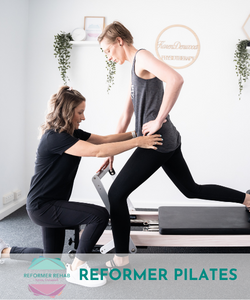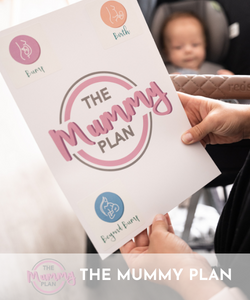Abdominal muscle separation, often referred to as diastasis recti, is a common condition experienced by many individuals during pregnancy and the postpartum period. In this comprehensive blog post, we’ll explore what diastasis recti means, why it occurs, the anatomical aspects involved, the hormonal effects on diastasis recti, and the crucial role that the linea alba plays in intra-abdominal pressure and core stability. We’ll also discuss research on tensioning the linea alba to assist with intra-abdominal pressure management.
What is Diastasis Recti?
Diastasis recti is the separation of the abdominal muscles, specifically the rectus abdominis, which are the muscles that run vertically down the front of your abdomen. During pregnancy, as the uterus expands to accommodate the growing baby, the connective tissue known as the linea alba can become stretched and weakened, leading to the separation of these muscles. This separation can persist into the postpartum period.
Why Does Diastasis Recti Occur?
Pregnancy: The primary cause of diastasis recti is pregnancy. The growing baby and uterus exert significant pressure on the abdominal wall, causing the muscles to stretch and separate.
Genetics: While pregnancy is the most common cause, genetic factors may also play a role. Some individuals may have a genetic predisposition to weaker connective tissue, making them more susceptible to diastasis recti.
The Anatomy of Diastasis Recti:
The rectus abdominis muscles are held together by the linea alba, a band of connective tissue. During pregnancy, hormonal changes and the stretching of this tissue can lead to widening and thinning. Diastasis recti is typically measured in finger-widths, with a gap of more than 2-2.5 fingers considered significant.
Hormonal Effects on Diastasis Recti:
Hormones, particularly estrogen and progesterone, play a significant role in diastasis recti:
Estrogen: This hormone increases during pregnancy and can affect connective tissues throughout the body, including the linea alba. Estrogen promotes tissue hydration and elasticity, which can contribute to the stretching of abdominal muscles and connective tissue.
Progesterone: Progesterone, another hormone elevated during pregnancy, relaxes smooth muscle tissue, including the uterine muscles. While this is essential for a healthy pregnancy, it can also lead to increased strain on the abdominal muscles, especially when combined with the stretching effects of estrogen.
The Role of the Linea Alba in Intra-abdominal Pressure and Core Stability:
Research has shown that the linea alba plays a crucial role in maintaining intra-abdominal pressure and core stability. When the abdominal muscles contract, they create tension in the linea alba, which acts as a supportive “bridge” between the left and right sides of the abdominal muscles. This tension helps to stabilize the core and support the spine, especially during activities that involve lifting, pushing, or exerting force.
Tensioning the Linea Alba for Intra-abdominal Pressure Management:
Recent studies have explored techniques to improve tension in the linea alba to assist with managing intra-abdominal pressure and core stability. Physical therapists and specialists may employ targeted exercises and manual techniques to encourage proper alignment and tension in the linea alba. These interventions aim to optimize core function and minimize the risk of diastasis recti or aid in its recovery.
Supporting Abdominal Muscles During Pregnancy:
Optimal Posture: Maintain good posture to reduce the strain on your abdominal muscles. Avoid slouching and use a pillow for back support when sitting.
Pelvic Floor Exercises: Incorporate pelvic floor muscle strengthening into your routine to help support the deep core system, keep your muscles strong under increased strain and to help minimise stretch on the linea alba.
Core Exercises: Engage in safe, pregnancy-specific core exercises, such as pelvic tilts and deep core and pelvic floor activation to strengthen the abdominal muscles and reduce strain on the connective tissue.
Starting Recovery in the Postpartum Period:
Consult with a Women’s Health Physiotherapist: Consulting with a Women’s Health Physio Post-natally can enable thorough assessment of abdominal muscles, connective tissue, pelvic floor and core system function. A personal plan can be devised to help you on your way to an optimal post-natal recovery.
Pelvic Floor Rehabilitation: Focus on pelvic floor Muscle strengthening to help rebuild the strength, stability and function of your core system.
Avoid Straining Movements: Be cautious with movements that put excessive strain on the abdominal muscles, such as heavy lifting, straining to open bowels and holding your breath when exercising.
Abdominal support garments: Some women find abdominal support garments or support belts helpful in providing gentle compression to aid in healing and providing some comfort.
Possible Genetic Factors:
While pregnancy is the primary trigger for diastasis recti, genetic factors can contribute. If you have a family history of diastasis recti or weaker connective tissue, it’s important to be proactive about prevention and recovery.
In conclusion, diastasis recti is a common condition during and after pregnancy, influenced by hormonal changes, genetics, and the stretching of connective tissue. The linea alba plays a pivotal role in intra-abdominal pressure management and core stability. With the right support, exercises, and potentially tensioning techniques, you can recover and regain core strength. Remember that every individual’s experience is unique, so please consult with a Women’s Health physiotherapist to kick start an optimal and personalised recovery program.
As always, remember to shout out if you have any questions on all things pregnancy and post-natal.

Much love from your Pre and Post-Natal Cheerleader,
Karen Denwood









